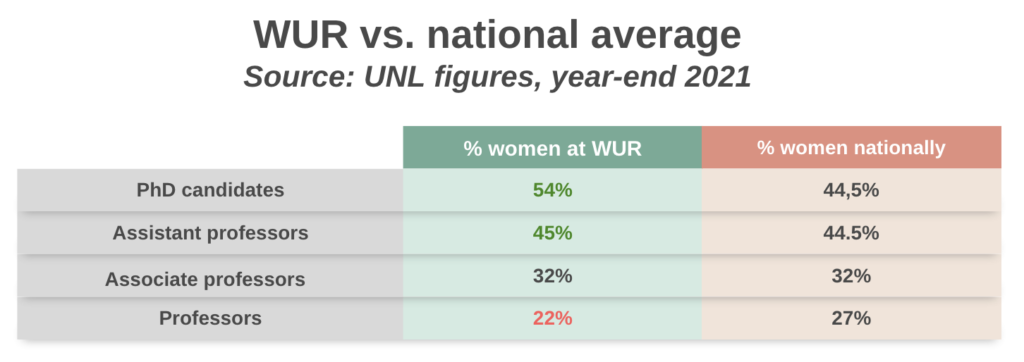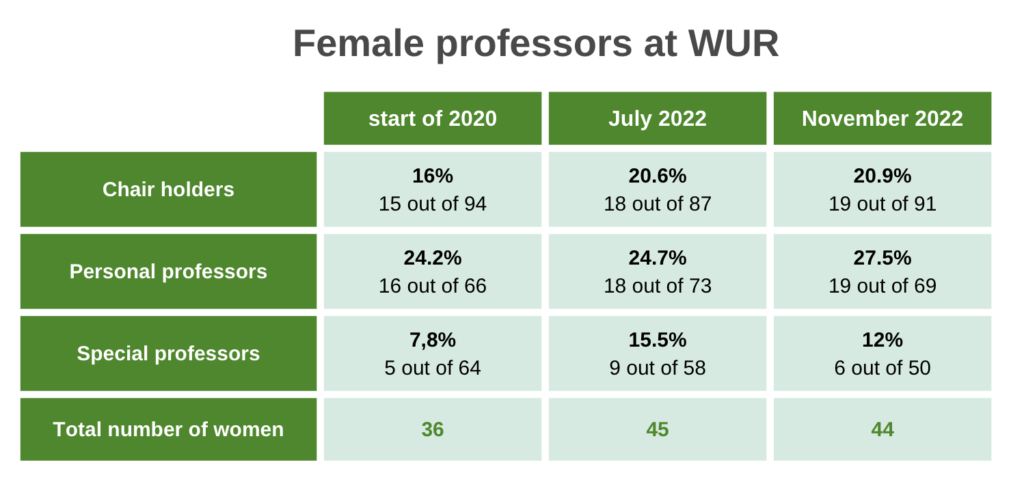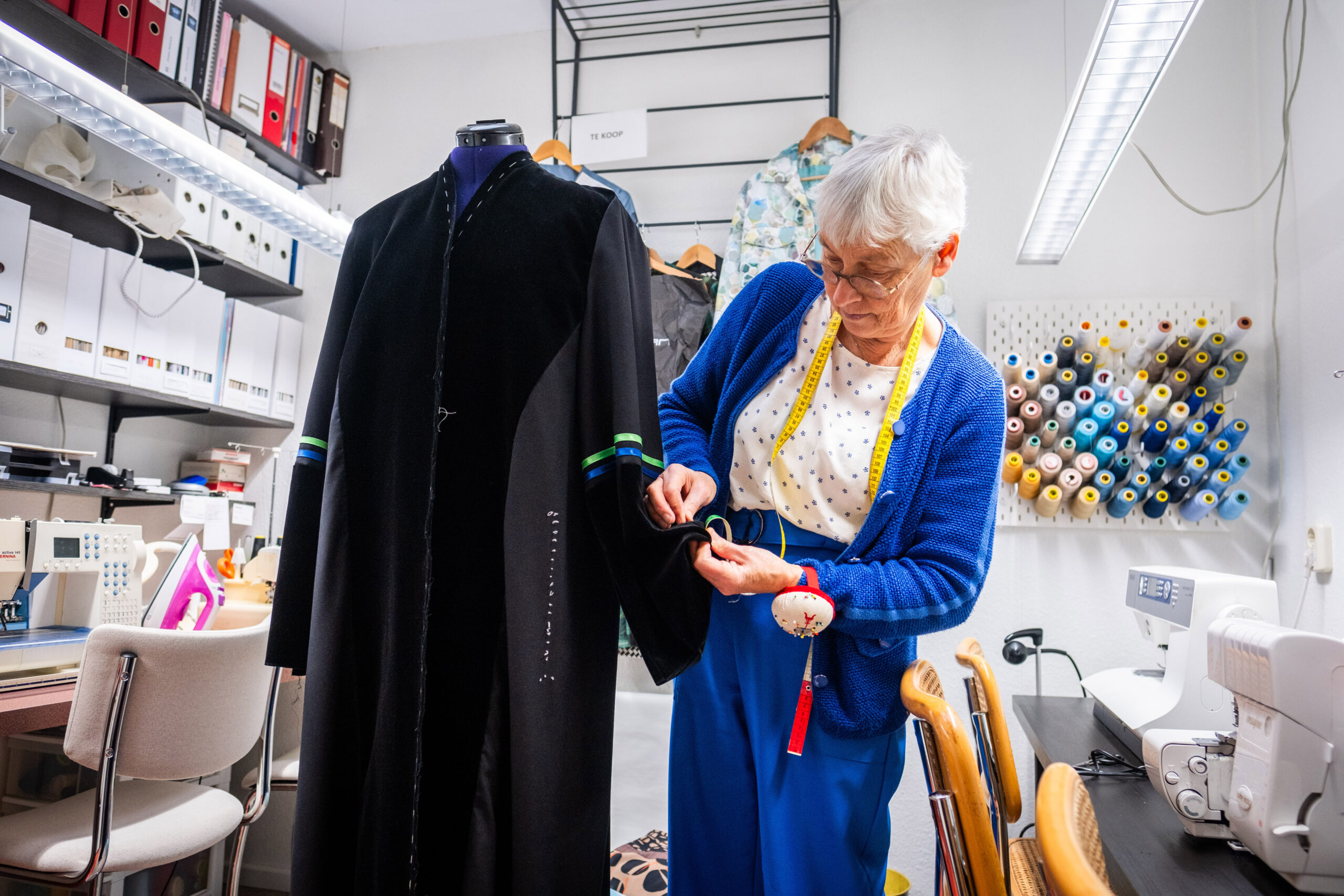The number of women in senior positions in academia is not increasing fast enough, says the new Women Professors Monitor. Progress is slow at WUR too.
Last year, the number of female professors in the Netherlands increased by 1 per cent, the smallest rise in five years. At this rate, it will take until 2041 to get a 50:50 distribution in male and female professors, calculates the Dutch Network of Women Professors (LNVH). The monitor notes gender inequalities in other respects too. Female academics are more likely to have a temporary position than their male colleagues and they are routinely on lower job scales.
The increase in women professors is just as slow at WUR as elsewhere. At the end of 2021, the proportion of female professors was just 1 percentage point higher than the year before: 21.9 per cent versus 20.9 per cent. With progress at this rate, it will take WUR 28 years to get as many female professors as male ones. It is also worth noting that at this rate, WUR’s own target of 30 per cent female professors by 2025 is not attainable either.
M/F/X
For the first time the Monitor has a category ‘other’ in addition to the categories of ‘men’ and ‘women’. LNVH acknowledges that this solution is far from satisfactory: ‘“Other” still sounds as if it is “outside the norm”. But at least it offers a start in abandoning the usual binary data registration and presentation.’
Catching up
But there is a glimmer of hope. LNVH notes that a large number of male professors will be retiring over the next few years, leaving room to appoint women to these positions. The relatively big increase last year in the share of female associate professors has also enlarged the pool of candidates to replace these men. Statistically at any rate, there are enough female associate professors available to replace more than 90 per cent of the professors due to retire.
Leaky pipeline
The figures on which the monitor is based, from the association of Dutch universities UNL as at the end of 2021, show that nationally women make up a majority of new graduates, at 53 per cent. The proportion of women among PhD candidates and assistant professors is 44.5 per cent, offering the prospect of gender equality soon. Such an even distribution is still a long way off among associate professors (32 per cent female) and professors (27 per cent female). In other words, the higher up the career ladder, the larger the gender gap — a case of a ‘leaky pipeline’.
The UNL figures for WUR show a particularly extreme leaky pipeline. Women are in the majority among PhD candidates: 54 per cent of Wageningen PhD students are female. The M/F ratio is relatively even in the ‘other academic staff’ category and for assistant professors: 49 per cent and 45 per cent respectively. But only 32 per cent pf Wageningen associate professors are women, and the percentage for professors is just 22 per cent. That is 5 percentage points less than the national average.

Own WUR figures
But the true situation in Wageningen often differs slightly from the monitor numbers, in part because the UNL figures don’t include WUR’s research institutes. For example, UNL gives 131 Wageningen professorships whereas WUR’s own list (*reference date of July 2022, which is also different to UNL) gives 224 professors. The picture based on WUR’s figures is as follows.
As at July 2022, 21 per cent of chair holders at WUR were women, compared with 16 per cent as reported by Resource at the start of 2020. Eighteen of the 73 professors holding a personal professorship were female. The M/F ratio (24.7 per cent female) was about the same as in 2020, when 16 of the 66 personal professors were women (24.2 per cent). The list of 58 special professors includes nine women, around 15 per cent. That is not exactly a sign of successful emancipation, but at least it is a lot better than the five out of 64 (7.8 per cent) that Resource reported in 2020. These figures all relate to professorship positions that had been filled (the eight vacancies as at July 2022 were not included).
NB: WUR has since published a new overview with reference date November 2022. A quick count shows the following:


 Four out of five WUR professors are male. Photo Shutterstock
Four out of five WUR professors are male. Photo Shutterstock 

